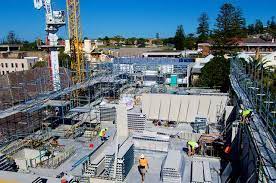
Architecture, engineering and construction employ 1.2 million people in Australia and account for 9 per cent of GDP. But our biggest services sector also produces roughly 40 per cent of landfill waste and accounts for 18.1 per cent of Australia’s carbon footprint.The sector must change its practices fast for Australia to meet its commitments to cut emissions under the Paris Agreement.
A circular economic model can help solve the environmental challenges created by our built environment – water, waste and power systems, transport infrastructure and the buildings we live and work in.A circular economy involves sharing, leasing, reusing, repairing, refurbishing and recycling materials and products for as long as possible.
Circular economy principles have gained recognition from all levels of government in Australia. A new report by university and industry experts lays out a roadmap to a circular economy. Those working in the sector reported the top three barriers as: a lack of incentives, a lack of specific regulations, and a lack of knowledge.The top three enablers were: research and development of enabling technologies, education of stakeholders, and evidence of the circular economy’s added value.
So what are the world leaders doing?
The report recommends learning from European nations like the Netherlands, Denmark, and Sweden, which have strong collaboration, rigorous regulations, and incentives for circular practices. Examples include the Netherlands’ Cirkelstad platform, Denmark’s use of secondary materials, and Sweden’s priority on using secondary materials in public projects. In Canada, Toronto is notable for its proactive approach. Measures include a cap on upfront carbon emissions for all new city-owned buildings.Test beds and pilot projects have proven effective, too. Waste House was built using more than 85% waste material from households and construction sites. Yet it’s a top-rated low-energy building. The project is an inspiration for architects and builders to challenge conventional construction methods and embrace circular practices
How can Australia create a circular economy?
Australia has been slow to adopt such measures. There are voluntary schemes, such as Green Star, that include emission caps for buildings.However, Australia lacks specific, well-defined requirements to adopt circular economy practices across the built environment sector. Integrating circular economy principles into education and training at universities and schools can embed a culture of innovation. Equipping students with this knowledge and skills will enable the next generation to drive change in our built environment.Currently, there are few Australian-based training programs that focus on the circular economy.
And available courses and programs overseas are costly.